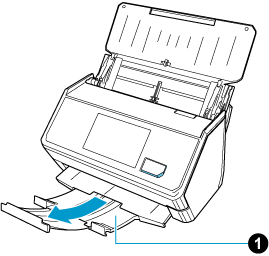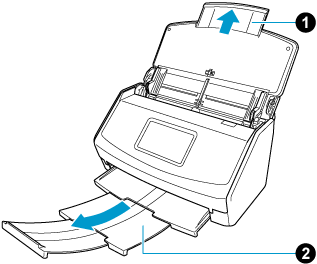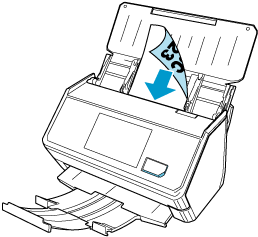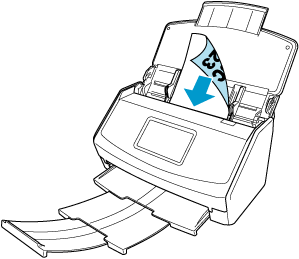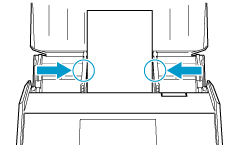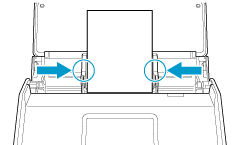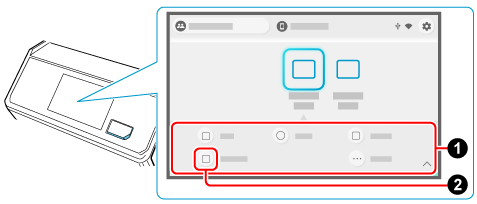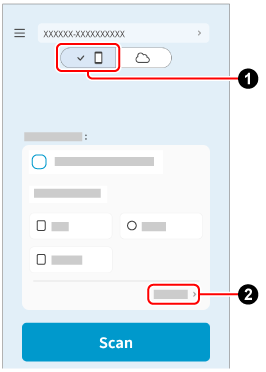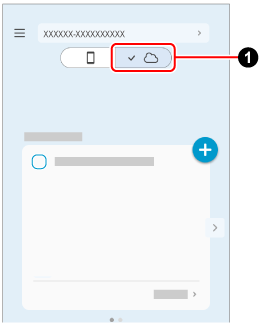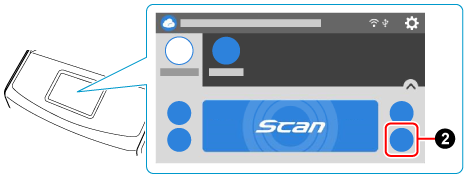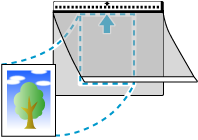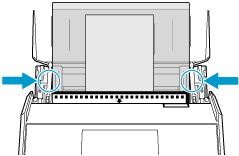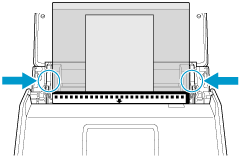Load a document that can be damaged easily, such as photographs, or non-standard size documents that are difficult to load, such as clippings, in the ScanSnap.
When images of scanned documents are saved to a cloud service, the optional Carrier Sheet or Photo Carrier Sheet can be used.
The following example procedure shows how to load documents directly and how to use the Photo Carrier Sheet.
-
Extend the stacker
 on the ScanSnap. Pull out the extension
on the ScanSnap. Pull out the extension  and the stacker
and the stacker  on the ScanSnap. Pull out the extension
on the ScanSnap. Pull out the extension  on the ScanSnap.
on the ScanSnap.
- Load a document in the ScanSnap.
- When loading a document directly in the ScanSnap
-
-
Load only one document in the ADF paper chute (cover).
Align the side guides with both ends of the document.
Specify the feeding method.
 Press the arrow at the bottom of the touch panel to display the scan settings.
Press the arrow at the bottom of the touch panel to display the scan settings.
 In [Feed] that appears when you press the feed icon, select [Manual scan].
In [Feed] that appears when you press the feed icon, select [Manual scan].
For details about feed setting items, refer to Displayed Screens on the Touch Panel.
- When saving scanned images to a mobile device
-
 Tap
Tap  on the Scan screen of ScanSnap Home on the mobile device.
on the Scan screen of ScanSnap Home on the mobile device.
 Tap [Detailed settings] and on the [Scan settings] screen, select [Scan] → [Feed (ADF)] and then select [Manual Scan].
Tap [Detailed settings] and on the [Scan settings] screen, select [Scan] → [Feed (ADF)] and then select [Manual Scan].
- When saving scanned images to a cloud service
-
 Tap
Tap  on the Scan screen of ScanSnap Home on the mobile device.
on the Scan screen of ScanSnap Home on the mobile device.
 Select [Manual scan] for [Feed mode setting] that appears when you press the feed mode setting icon on the ScanSnap touch panel.
Select [Manual scan] for [Feed mode setting] that appears when you press the feed mode setting icon on the ScanSnap touch panel.
For details about feed mode setting items, refer to Displayed Screens on the Touch Panel.
- When loading a document using the Photo Carrier Sheet (while linking with a cloud service)
-
Open the Photo Carrier Sheet and put the document inside.
Load the Photo Carrier Sheet in the ADF paper chute (cover).
Align the side guides with both ends of the Photo Carrier Sheet.
 on the ScanSnap.
on the ScanSnap. on the ScanSnap.
on the ScanSnap.